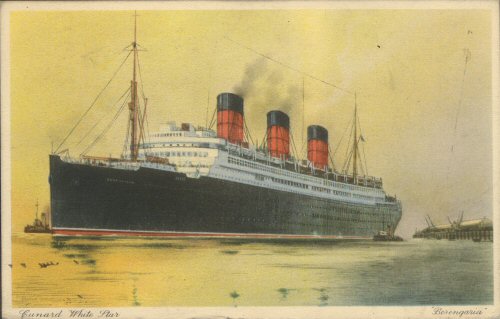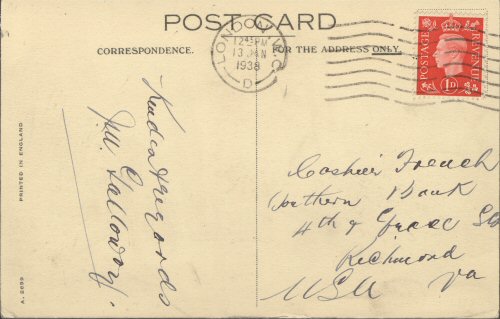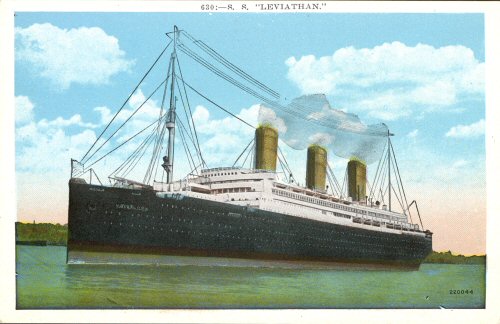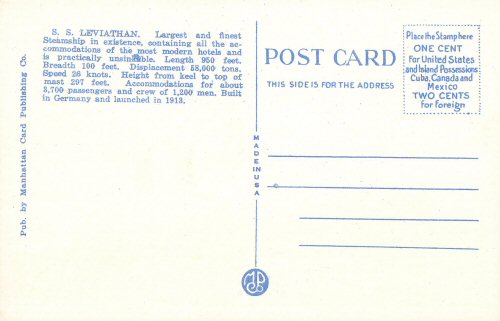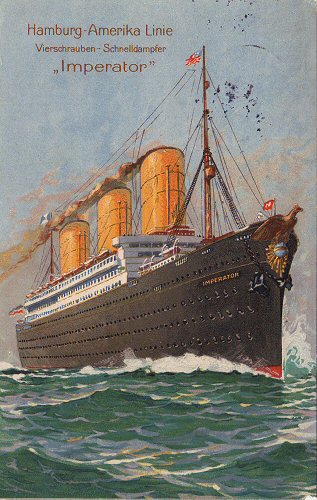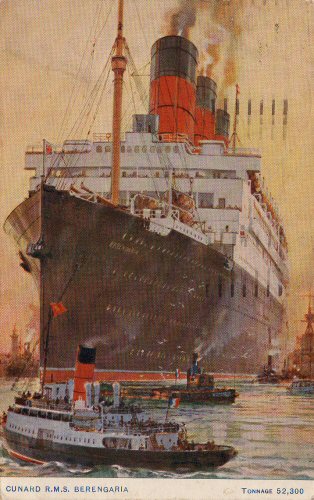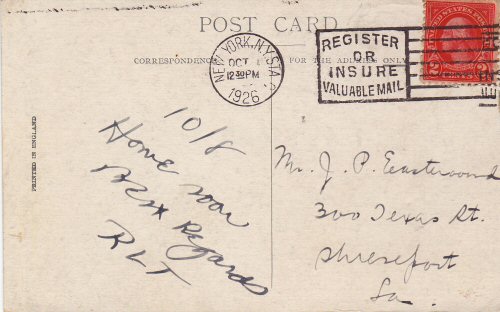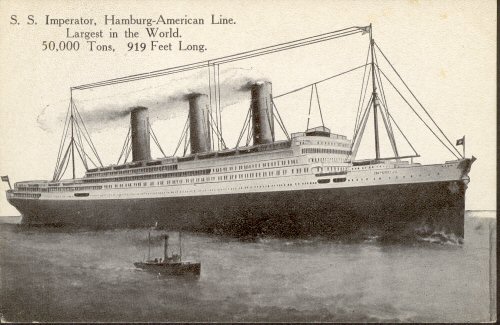
Launched 05-23-1912, Vulcan Shipyards, Hamburg
Gross Tonnage - 52,226
Dimensions - 269.09 x 29.96m
Number of funnels - 3
Number of masts - 2
Builder - A.G.Vulcan, Hamburg
Commisioned 05-24-1913
Size: 52.117 gross tons (European); 15,000 tons.
Length over all: 277.06 m (269.07 registered)
Width: 29.87 m
Depth: 19.20 m
Machines: 4 turbines AEG-Vulcan
Speed: 23 knots normal, 24 knots maximum
Capacity: 714+194 first class, 401+205 second class, 962+1772 third class passengers, 1180 crew.
Launch of The Imperator
Brief History
06-20-1913 maiden voyage from Cuxhaven to New York / 08-1914 in Hamburg harbor for the duration of the war / 05-05-1919 seized by US navy as troup transporter / 02-1920 handed over to Shipping Controller, London / 02-1921 sold to Cunard Line and renamed "Berengaria" / 1934 Cunard and White Star Line merge / 03-03-1938 the ship catches fire in New York harbor / 11-07-1938 sold for scrapping.
Imperator During The War
The "Imperator" saw the longest period of peacetime transatlantic service of the three liners. Her next Westbound voyage from Cuxhaven to New York was scheduled for July 31. For this trip, the liner was sold out in all classes. Officials of the German Imperial Navy, however, intervened before she could leave the harbor. They considered the danger of war in Europe after the Russian general mobilization too high to risk losing this valuable ship. She spent the duration of the war moored at a pier on the Elbe River - a local sight and a tourist attraction, rusting and stuck in the mud.
Imperator After The War
The oldest of Ballin's monster ships had survived the war idle and unharmed in Germany and in May 1919 was handed over to the US shipping board. For a while, the ship was used as a trouper for returning American soldiers before being transferred to the British as a reparation for the "Lusitania." The ship became the new flagship of the Cunard Line. After she had retained her original German name for a series of Atlantic crossings, the British rechristianed her the "Berengaria." She remained one of the most beautiful and most popular liners of her time. She was sold for scrapping in 1938 after Cunard had introduced the giant "Queen Mary" and "Queen Elizabeth" two years before.
RMS Berengaria
Imperator Becomes RMS Berengaria
Between 1920 and the entry into service of the Queen Mary in 1936, the Berengaria was the pride of the Cunard fleet. The ship, however, was originally built for the Hamburg-America line. It was built at the Vulcan Werft shipyard at Hamburg on the river Elbe. It was originally called the Imperator and was launched on 23 May 1912. As it was launched only 5 weeks after the Titanic disaster changes had been made both in hull design and the equipment on board in order to increase safety. At the time the Imperator was the world's largest ship.
During WWI the Imperator lay protected on the river Elbe. At the end of the war the Allied forces of occupation found the Imperator rusted, decaying and stuck in the mud. After serving as troop transport until August 1919 it was transferred to Britain and it was made clear that the vessel would be managed by the Cunard Line.
Retaining the name Imperator, it made its first voyage for Cunard on 11 December 1919 from New York to Southampton. On 21 February 1920 it made its first voyage from Liverpool to New York. The ship continued to serve this route but it was decided to change the name to the Berengaria. It was converted from coal burning to oil burning engines and a complete overhaul was carried out by Armstrong Whitworth & Co. on the Tyne.
The ship, however, was not without its fair share of problems. In August 1922 the liner struck a submerged object which damaged one of her propellers. Later the same year she lost 36 feet of guard rail in the Atlantic during heavy weather. For the next 6 years, however, the ship operated successfully on Cunard's express service in conjunction with the Mauretania and Aquitania.
During the early 1930's the ship went aground twice on the approaches to Southampton, although she suffered no real damage. 1933 saw another major overhaul for the ship at Southampton, during which the interior was upgraded. The withdrawal of the Mauretania in 1934 placed further pressure on the ship to operate more efficiently and in 1935 she set a record passage on the New York to Southampton route.
During an overhaul at Southampton in 1936 a fire broke out in the first class cabins on the starboard side of the ship. The fire was soon controlled and extinguished but there was considerable smoke and water damage. It was ascertained that the cause was defective wiring, which was eventually to lead to the Berengaria's demise. It made its final passage on the Southampton-Cherbourg-New York route on 23 February 1938.
After it arrived in New York, on 3 March, a fire was discovered in the first class lounge. It took the ship's crew and firemen over 3 hours to bring the blaze under control. After officials had examined the ship it was decided that they could not give her clearance to embark passengers. The following day she sailed back to Southampton where it was discovered that faulty wiring had been the cause of the fire again.
As the cost of renovation would be so high it was decided to withdraw the Berengaria from service altogether, on 23 March 1938. For the next few months she lay idle in Southampton dock until 19 October when it was decided to dispose of her. Sir John Jarvis MP bought the ship for demolition on the Tyne at Jarrow for £108,000. The ship sailed from Southampton on December. The furniture and fittings were auctioned in January 1939 and over 200 Jarrow men were employed in breaking up the old ship. The outbreak of war, however, meant that the men were required elsewhere so it was not until 1946 that the remains of the hull were towed to Rosyth for the final process of dismantling. By this time few people were interested in the remains of an old liner that had been built in the Imperial Germany of 1913.
